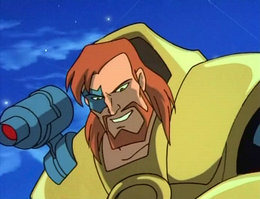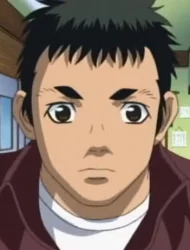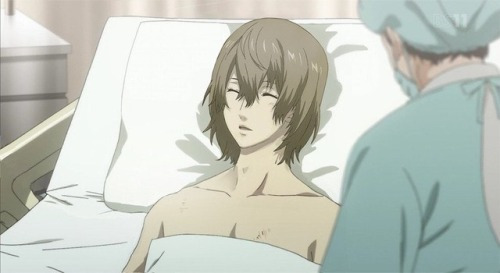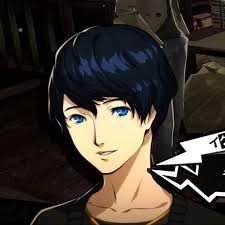#or like half a shinya physically he has him back but mentally not really
Text
heyy guys do u like my new pfp

if you don't interact she'll come to your room at 3am and kill your best friend
#just kiddingg guys she's harmless she just wants to be a normal girl#pls donate to the Girl In Love foundation to help your local serial killer girlie seduce her crush#no bitches meme except guren has tons of bitches but zero shinya#or like half a shinya physically he has him back but mentally not really#i'm rambling again.#owari no seraph#seraph of the end#shinya hiiragi#guren ichinose#mahiru hiiragi#gureshin#art stuff#stop mahiru glorification 2024
62 notes
·
View notes
Text


all you who sleep tonight ‹ masterlist › he and i

𝐭𝐰𝐢𝐧 𝐬𝐭𝐚𝐫𝐬
Sharing a bedroom had proven to be of no bother for either parties. Iwaizumi had feared it would be a bit awkward given that they weren't romantically involved, but his worries were a bit useless, YN had made it easy and comfortable for the both of them.
Cohabitating and sharing was starting to make him feel different as well. He couldn't really put a name on it, but it started when he began to see the little things around him.
Going into the bathroom and finding his toothbrush beside yn's. Her towel hanging beside his, the shower containing his and yn's products, he accidentally tried yn's body wash and ended up liking the smell and exfoliating that he mentioned to yn if she could buy more. She had giggled but agreed, mentioning the different types that there were which ended up in both of them starting to shop together after work and school.
He found himself staring at her as she looked over the products, making sure they are the right ones. Or when she pouts for Iwaizumi to have a heart and let her buy junk food (which he always does). Or when he opens the closet door to find his clothes beside hers, the contrast of variety and color always making him smile.
Or when he wakes up earlier than his alarm, turning his head to find her beside him. His eyes travelling from her hair sprawled around her pillow, her hands clutching said pillow up to her shoulders, watching the goosebumps appearing on her skin. Eyes travelling down to always find the bedsheet pooling under her waist and he never knows why or how. He would pull the sheet up, cover you as he watches you let out a soft sigh and a content smile that never fails to make his heart flutter.
It makes him wonder if he's always felt this way, and if not, since when?
―
Jae hasn't stopped calling him.
He thought that after the discussion they had at yn's parents last week would be enough to get her off his back, but it proved to be pointless and he was beginning to think that she did not leave the house by her own assessment.
Mr. and Mrs. LN must have sent her home after listening to her horrible criticism of their daughter. Something she had done in the past and never failed to sour his mood. He didn't know what her problem was, but he knew she was lying about everything concerning you, learning it was best to ignore her comments than correct her.
It was on the third day that he felt his patience snap.
She had been calling him relentlessly to the point that the coach had asked him to take the call, 'It could be an emergency.' He disregarded it as spam calls and was left alone once he placed his cell the profile in vibration, so even though it was vibrating non-stop, at least everyone else couldn't hear it.
Once it was lunch break I pulled out my phone.
53 missed calls from Jae
15 voicemails probably from Jae
27 texts from Jae
He ignored Jae's attempts in communicating with him, deleting everything in one go and focusing on a little one who had also been trying to get in touch with him a while ago.
1 missed call from mochi mochi
3 texts from mochi mochi
mochi mochi: omg sorry! I forgot that you're in training rn
mochi mochi: I was calling to let you know that I'm heading to the library for school work D:
mochi mochi: letting you know because you wanted to pick me up today, i'll go home later dw! have a lovely day hajime♥
His little mochi was a bit selfless sometimes. He was going to text you back, but his irritation from Jae's insistency was rubbing him wrong all over his body so he thought best to call you and let your voice sooth his nerves.
"Hajime! Good morning, is anything wrong?" Just like that, he felt his frustrations be washed away at the sound of your voice, like cold water running all over him.
"Morning mochi, I saw your text, everything all right?" Out of the corner of his eye, he could see the athletes and the coaches acting as if they weren't listening but the way their bodies were leaning towards him gave it away.
He had half a mind at telling them to mind their own business.
"Ah, well, we got a request from the film majors to help out with their project scripts and we weren't actually going to do it, since we already have enough stuff as is," he recalls the nights he would come in late, watching you giving it your all even if you finished at 3am, he was worried about your health during that time and after your breakdown, he had a reason to be worried now, "luckily we are working in large teams, sadly I'm doing the rough draft."
"Sounds rough, mochi. Anything I can do to help?"
In an almost timid manner, she asked softly "Keep me company?"
How could he reject?
―
Once he hung up, one of the senior coaches passed behind him and smack his hand on his back with a grin, "The ol' ball 'n chain, huh? You should go and buy her something to eat today, having to tolerate your ass. Now come on, we have a team to train for a win."
―
11:45 pm
He had brought her favorite food and drink to the school library, sneaking to the back to eat and not get caught by anyone there. It look familiar yet very different from the one back in California, when he would stay until early morning studying on the weekends, with you doing the same in the video call in front of him.
Now your right in front of him, physically and mentally in his presence. He had been working on some stuff from work as you continued your studies and felt relived and in peace in the comfortable silence but, it had been a while since he had finished it all and he soon found himself staring at you.
The shape of your eyes, your soft hair, your nose, your soft lips, the curve of neck, the way your shirt shaped your breasts...
He mentally slapped himself at that thought, why- why the hell is he thinking of your breasts? Since when is he thinking about it? Why-
"Ah! I didn't even notice the time, let's go Hajime... are you okay?"
"Yeah, um why?"
"Your face is all red", she came to stand in front of him, touching his forehead, "hmm, you don't have a fever... maybe you're just tired? I'm sorry, I shouldn't have asked you to stay for so long." Her soft cold hand felt nice against his face as she rubbed her thumb up and down his forehead.
He remembered that she used to do this when she was younger, "You have to stop doing that Hajime!," she would exclaim as she rubbed his forehead in a similar matter as now, "You'll get wrinkles too young!"
The old memory made him laugh, your expression back then mirrored to present day. "What so funny?"
He smiled and took all of your stuff from the table, taking your hand in his, "Nothing, lets just go home, mochi."

Can you hear my heart?
Oh, but I can tell!
We are twin starts
With different births.
My caring shadow ―
It has your face.
The voice of my soul
Knows well your name.
Tell me,
Can you hear my heart?
Oh! how I love you,
My best friend.
Twin Stars ― Clairel Estevez

taglist ! @daphnxy @zukoslosthishonor @i-am-a-hoe-for-shinya @mrsdoradominguez-barnes @anejuuuuoy
a/n! i beat the system so here's a chapter guys ♥ also... since i couldn't post one last week, there will be a double post this one!
29 notes
·
View notes
Text
Phan Cam: A Superior Suspicion Part 2

>A hospital on the outskirts of Tokyo. We came here right after we saved our friend.

Shinya, you’re here!

I am. How’s my mom and Yuta?
>Mrs. Oda rushes up to her son... and slaps his face.

OW!
Mrs. Oda: Why, Shinya!? Why do you think I just did that!? (begins tearing up and embraces her son) I’m just so glad you’re alright!

I’m sorry, Mom. I love you.

If we’re done here, I believe you have a friend you wish to see.
Shinya: I know. Where’s Yuta?

He and Setsuko are in the next room for more testing. Yuta’s operation doesn’t happen until later this month, the same day I have my match with Joe Yuuki, but he was really worried about you.
>We go over to the next room... We were surprised to see Joe Yuuki and Maki Takakura here.

Shinya, you’re here! How was your trip?
Shinya: Well, let’s just say it was...

Jawsome.

I’m not sure what that means, but it sound like you had a nice time.

And what about you two? What brings you here?

Joe’s, my Joe’s, mother is a patient here. We came here to visit her and renew the contract that allows her to stay here. As for visiting the kid... That was Joe’s idea.
Oracle: (smirking a bit) Is it now?

... Maybe... A little.

HA! So you do care about Yuta! I knew that threat you made to him was phony. Boxing greatest villain has a heart after all.
Yuuki: ... I just wanted to make sure Akamine is fully focused and not distracted for our fight. I prefer it to be a fair fight.
Joe: (smiling) Right, keep telling yourself that, buddy.

Will you all be alright?

It won’t be easy, but I think we’ll be fine.
>With that, we leave. I look back at them... I wish only for the best for him... A vision comes to mind.
NOTE: The vision is the opening of Joe vs. Joe. We think the scenes in it are the future.
>As we were leaving, someone ran up to us.

Akine chan!?

Ryuji kun, you’re back! Listen, you have to come with me.

What do you mean?

Wait, I know exactly what’s wrong.

Let’s go.
>We follow the young woman known as Akine down the hall. We arrive at a window to a room. There were six other people there.

Ryuji kun. You’re here. And you must be Akechi’s other friends.

And you are...

Akechi’s other neighbors from the apartment he lives in. Akine is his neighbor, too.

It’s a pleasure to meet you. It’s just said we had to do it under... Grave circumstances.
>We look inside the window... What we saw in there made our jaws drop.


No.

(banging his fist on the glass) CRAP NO, AKECHI!

Ryuji, calm down!

What happened to him?

We’re not sure. He came back to the apartment for lunch. Suddenly, he began holding his head in pain and was screaming. Then he just collapsed. We tried to wake him up, but no response.

Even my dogs’ licking didn’t help, and that usually works. So we brought him here. We learned of this hospital from Akechi when he told us earlier that a friend of yours was here for his condition.

The doctors say that all the tests they ran on Akechi showed that he’s in perfect physical health. So it must be a mental problem. But I’m afraid that’s where it gets a little... Odd.

Like what?

Well, the doctors at first think he might have fallen into a deep sleep. But the symptoms are more similar to, well... A coma.

You mean...

The link.
Man with ponytail: Link? Oh, you mean the one he has with Spider-Man.

You know about it!?
Fox-eyed man: Well, we did learn that your other friend is linked with Harry Osborn.
>He was happily pointing to Skull.
Skull: (a bit surprised) You know? How long?
Akine: Since that night you came to stay with Akechi... You really need to find a better way to sneak a guy who turn into an alien out. And at the same time, we learned Stealth Spider got weakened. Then, we learned not long after Akechi collapsed, Spider-Man starts acting odd? We think there’s more to it.
Diego: There’s no really hiding it, is there?
Spiky-haired man: Not really. I thought it was just another supernatural thing, it wasn’t exactly that, but it was unusual, even for what I’ve seen.

Another supernatural thing? What you’ve seen?

It’s a long story.
Joker: I suppose. Anyway, Akechi’s in a coma. That’s just like what happened two years ago. Peter bonded with the V-252, the Venom Symbiot, and Akechi fell into a coma.
Skull: Then again, when I turned into Overflow, Harry was only in a coma for a short time. But why is it that for Akechi, his comas last longer.
Diego: I can only think of few reasons. Harry’s coma only lasted a short time is because you weren’t fully Overflow. Your mind was still yours, but only for a time. If you had fully become Overflow... He would fall into a long coma. As for Akechi, I think it’s because Venom was already strong enough to take Peter’s mind. That’s why he fell into a longer coma. And now it’s happening again. Only this time, instead of Venom, it’s Doctor Octopus. We can get rid of Venom easily, but it’s a mental problem than a physical one.
Fine-looking man: So, if Akechi and Ryuji have their minds taken over or go into a coma, the same will happen with Peter and Harry? And vise versa?
Queen: That’s what it seems anyway. We’re still unsure how this link works. We don’t even know how it first formed.
Akine: I see.
Noir: But surely something can be done. A way to put Peter back in his own body.
Alex: Easier said than done.
Diego: What do you mean?
Alex: If I knew where Peter’s spirit and mind are, I could put him back in no time at all. Unfortunately, we don’t know where it is. So there’s nothing I can do. Spider-Man will be stuck as Superior Spider-Man.
Oracle: But if that’s true...
Alex: Your friend will remain in that coma... What a way to spend the upcoming release of Persona 5: Royal.

No. Akechi.
Alex: Not to worry. I know of only one way that can save him now.
Queen: What do you mean?
Alex: It pains me (a bit) to tell you this... Sever the connection.

What?
Alex: Sever the connection that links Akechi’s mind to Parker’s. If this happens, Akechi will awaken.
Noir: And... You can do that?
Man with ponytail: He can.
Alex: I see, you know about me... Ryu.
Ryu: And you know about me. Yes, I am a psychic and I can see your energy... The energy of Avalon.
Spiky-haired man: (a bit puzzled) Avalon?
Fox-eyed man: The Island of the Fair Folk. Home of the Third Race. And Kingdom of Oberon.
Spiky-haired man: (shocked) You’re a fairy!? Alexander Xanatos is a fairy!?
Alex: I don’t think they’ve heard you on Mars. Yes. I am half fairy. My grandmother, Titania, after leaving Oberon, married a mortal man. He was my grandfather. Together, they had my mother. Then, after marrying my father, they had me. I won’t say where I learned how to control my powers, but I can. I have even created a spell... And it’s going to save your friend.
Joker: That sounds wonderful.
Alex: However, there’s a catch.
Diego: What is it?
Alex: If I sever the connection... All of Parker’s memories of Akechi will go with it.
Everyone: (except Alex) WHAT!?
Alex: All of Parker’s memories of Akechi, from the moment the connection was made, will vanish. Parker will remember Akechi, but only as the Detective Prince known by the media, not as his friend. Not to mention that Parker will realize that he is in a world where everyone knows he’s Spider-Man and doesn’t know why or how.
Joker: Will Akechi forget, too?
Alex: No. His Persona will remember for him. But Parker will definitely forget.
Noir: But, Akechi and Peter have become such good friends. And everyone knowing that he’s Spider-Man made his life a little bit better. To lose all of that...

It would just be too painful.
Alex: Well I’m not saying you have to. The decision is really yours... Or rather, your leader’s.

Mine?
Alex: As the leader, you take responsibility for your whole team.
>I was just unsure of this.
Alex: I’m not going to force you to make a decision now. I’ll give you time to think about it. When you’re ready, I’ll waiting.
>With that, he leaves.
Rough-looking man: (unimpressed) Like father, like son.
Spiky-haired man: (confused) I don’t understand. The leader?
Ryu: Didn’t you know? ... Akechi and his friends are the Phantom Thieves.
Spiky-haired man: (shocked) WHAA!
Diego: (unhappy) Those Martians definitely heard that.
>We go to the cafeteria. We do introductions. Kuga Akine, the girl we met earlier, is an exorcist. Ryu, the man with the ponytail, is a psychic, just like Chifune. The spiky-haired man and the fine-looking man are Yushi Inaba and Mizuki Hase, respectively. They currently live together to look after a young boy named Kuri and his dog named Shiro who both reside at the apartment. The rough-looking man is Akira Fukase, painter. (Fox says he’s happy to meet a fellow artist.) The fox-eyed man is Reimei Isshiki, a poet. And the bookish man is called Furuhonya, a mage (not a magical girl) and a secondhand bookshop employee. The apartment they live in... Is home to ghosts, spirits, monsters, basically youkai.

I see. Akechi has some really interesting neighbors.
Ryu: And he has some interesting friends. I also know that you possess magic because of your Personas, Ann Takamaki.
Panther: You know?
Furuhonya: From Headmistress Faragonda. She told me the last time I delivered some ancient tomes to Alfea... By the way, she told me to give you this.
>He hands Panther a book.
Furuhonya: It’s got some basic stuff, too, but it also has some more advanced things as well.
Panther: Thanks. I’ll be sure to thank her, too... I wonder if it has anyway to awaken Akechi without severing the connection to Peter.
Skull: If it did, we would know why we became linked in the first place. (getting a little upset) Damn it, I knew he shoulda come with us.
Joker: I think he knew what was going to happen and didn’t want to worry us.
Skull: But that’s what happened anyway.

WHY’D THE EFF DID THIS HAVE TO HAPPEN!?
Hase: It’s not your fault, Ryuji kun. Doc Oct is a very dark person.
Joker: I thought changing his heart would make him a better person, but instead, it only made him worse. And now look, Akechi’s in a coma and Peter is lost.
Queen: And what’s worse, while in his body, Otto Octavius is doing things as Superior Spider-Man that are making Peter look bad and J. Jonah Jameson is having a field day with this.
Yushi: Can’t you just tell him that Doc Oct is using Spider-Man’s body?
Queen: With what proof? It would be our word against his. Besides, he hates Spider-Man. We learned of this already on a previous heist. But that was a different Jameson.
Royal: Then what will we do? If Peter can’t get his body back, Akechi will never wake up and he could die. I’m starting to think that accepting Alex’s offer might be a good idea.
Queen: Hold on, are you really sure? If we do sever the connection, all of Peter’s memories of Akechi will be gone. And we won’t even remember how everyone knows he’s Spider-Man.
Skull: Pete said that S.H.I.E.L.D. is willin’ to make everyone think that him bein' Spider-Man wasn’t real... But that means going back to making up lame excuses on why he keeps disappearin'. And it will only make others and himself unhappy...

Typical Parker Luck.
Royal: Is it really that bad?
Diego: The worse.
Panther: What are we to do? Do you think one of you guys can do it? Akechi’s your neighbor.
Akine: Would if we can, but I think whatever Doc Oct did, it might be too difficult even for us.
>What am I to do? This is a very important decision. If I choose to break the link, all of Peter’s memories from the moment the connection was made will be gone, but at least Crow will awaken... But then I remember something...
Harry’s voice: I believe in Pete... We can work it out... You just have to be patient... Have faith in him like I do.
>... I finally know what to do. Then, I see Alex coming in. I go up to him.
Alex: I see you’ve made your choice.
Joker: I have.
Alex: And?

>Do it.
>>I believe.

I believe in my friends. So, no.
Alex: Are you sure about that?
Joker: I’m sure that the Web Warriors and their friends will find a way to solve this problem. We just have to be patient. But just in case...
Alex: You’ll let me know you changed your mind? ... Very well.
Joker: So, if you don’t telling us how to contact you in case we do change our minds...
Alex: That’s easy... (begins smiling) Talk to your new principal.
>With that, he was gone.

New principal?
Fox: (calling) Ren, we’re have you told him!?
Joker: (calling back) I’m coming!
>With that, I rejoin my friends and tell them what happened.
Royal: I see. I guess I’ll be filling in for Akechi until he awakens.
Joker: Normally, that would be the case... But with that upcoming release of Persona 5: Royal, I don’t think we’ll be doing any heists for a while. But I'm sure things will be fine before then, I really want us to go to our school’s Culture Festival. And the one at Kosei. Not to mention Halloween.
Furuhonya: (a little disappointed) Culture Festival? I hope things will go smoothly this time.
Oracle: What do you mean?
Hase: Two years ago, we were invited to Yushi’s school’s festival, but Furuhonya showed up late and missed it. He tried again last year, but it got cancelled due to a fire that broke out during summer break. Luckily, no one got hurt, but the school was closed for renovations.
Yushi: I’m sure you’ll make it this year.
Furuhonya: Hope you’re right.
>Outside, Alex heard... He smiled.
>Until after the release of Persona 5: Royal, you won’t be posting, but you can still send heist requests and we will change the poll next month. Until we meet again.
NOTE: Picture of Comatose Crow was originally from this post. It’s actually an alteration of this picture.
0 notes
Text
A Familys Race to Cure a Daughters Genetic Disease
One July afternoon last summer, Matt Wilsey distributed small plastic tubes to 60 people gathered in a Palo Alto, California, hotel. Most of them had traveled thousands of miles to be here; now, each popped the top off a barcoded tube, spat in about half a teaspoon of saliva, and closed the tube. Some massaged their cheeks to produce enough spit to fill the tubes. Others couldn’t spit, so a technician rolled individual cotton swabs along the insides of their cheeks, harvesting their skin cells—and the valuable DNA inside.
One of the donors was Asger Vigeholm, a Danish business developer who had traveled from Copenhagen to be here, in a nondescript lobby at the Palo Alto Hilton. Wilsey is not a doctor, and Vigeholm is not his patient. But they are united in a unique medical pursuit.
Wilsey’s daughter, Grace, was one of the first children ever diagnosed with NGLY1 deficiency. It’s a genetic illness defined by a huge range of physical and mental disabilities: muscle weakness, liver problems, speech deficiencies, seizures. In 2016, Vigeholm’s son, Bertram, became the first child known to die from complications of the disease. Early one morning, as Bertram, age four, slept nestled between his parents, a respiratory infection claimed his life, leaving Vigeholm and his wife, Henriette, to mourn with their first son, Viktor. He, too, has NGLY1 deficiency.
Grace and her mother, Kristen Wilsey.
BLAKE FARRINGTON
The night before the spit party, Vigeholm and Wilsey had gathered with members of 16 other families, eating pizza and drinking beer on the hotel patio as they got to know each other. All of them were related to one of the fewer than 50 children living in the world with NGLY1 deficiency. And all of them had been invited by the Wilseys—Matt and his wife Kristen, who in 2014 launched the Grace Science Foundation to study the disease.
These families had met through an online support group, but this was the first time they had all come together in real life. Over the next few days in California, every family member would contribute his or her DNA and other biological samples to scientists researching the disease. On Friday and Saturday, 15 of these scientists described their contributions to the foundation; some studied the NGLY1 gene in tiny worms or flies, while others were copying NGLY1 deficient patients’ cells to examine how they behaved in the lab. Nobody knows what makes a single genetic mutation morph into all the symptoms Grace experiences. But the families and scientists were there to find out—and maybe even find a treatment for the disease.
That search has been elusive. When scientists sequenced the first human genome in 2000, geneticist Francis Collins, a leader of the Human Genome Project that accomplished the feat, declared that it would lead to a “complete transformation in therapeutic medicine” by 2020. But the human genome turned out to be far more complex than scientists had anticipated. Most disorders, it’s now clear, are caused by a complicated mix of genetic faults and environmental factors.
And even when a disease is caused by a defect in just one gene, like NGLY1 deficiency, fixing that defect is anything but simple. Scientists have tried for 30 years to perfect gene therapy, a method for replacing defective copies of genes with corrected ones. The first attempts used modified viruses to insert corrected genes into patients’ genomes. The idea appeared elegant on paper, but the first US gene therapy to treat an inherited disease—for blindness—was approved just last year. Now scientists are testing methods such as Crispr, which offers a far more precise way to edit DNA, to replace flawed genes with error-free ones.
Certainly, the genetics revolution has made single-mutation diseases easier to identify; there are roughly 7,000, with dozens of new ones discovered each year. But if it’s hard to find a treatment for common genetic diseases, it’s all but impossible for the very rare ones. There’s no incentive for established companies to study them; the potential market is so small that a cure will never be profitable.
Which is where the Wilseys—and the rest of the NGLY1 families—come in. Like a growing number of groups affected by rare genetic diseases, they’re leapfrogging pharmaceutical companies’ incentive structures, funding and organizing their own research in search of a cure. And they’re trying many of the same approaches that Silicon Valley entrepreneurs have used for decades.
At 10:30 on a recent Monday morning, Grace is in Spanish class. The delicate 8-year-old with wavy brown hair twisted back into a ponytail sits in her activity chair—a maneuverable kid-sized wheelchair. Her teacher passes out rectangular pieces of paper, instructing the students to make name tags.
Grace grabs her paper and chews it. Her aide gently takes the paper from Grace’s mouth and puts it on Grace’s desk. The aide produces a plastic baggie of giant-sized crayons shaped like cylindrical blocks; they’re easier for Grace to hold than the standard Crayolas that her public school classmates are using.
Grace’s NGLY1 deficiency keeps her from speaking.
BLAKE FARRINGTON
At her school, a therapist helps her communicate.
BLAKE FARRINGTON
The other kids have written their names and are now decorating their name tags.
“Are we allowed to draw zombies for the decorations?” one boy asks, as Grace mouths her crayons through the baggie.
Grace’s aide selects a blue crayon, puts it in Grace’s hand, and closes her hand over Grace’s. She guides Grace’s hand, drawing letters on the paper: “G-R-A-C-E.”
Grace lives with profound mental and physical disabilities. After she was born in 2009, her bewildering list of symptoms—weak muscles, difficulty eating, failure to thrive, liver damage, dry eyes, poor sleep—confounded every doctor she encountered. Grace didn’t toddle until she was three and still needs help using the toilet. She doesn’t speak and, like an infant, still grabs anything within arm’s reach and chews on it.
Her father wants to help her. The grandson of a prominent San Francisco philanthropist and a successful technology executive, Matt Wilsey graduated from Stanford, where he became friends with a fellow undergraduate who would one day be Grace’s godmother: Chelsea Clinton. Wilsey went on to work in the Clinton White House, on George W. Bush’s presidential campaign, and in the Pentagon.
But it was his return to Silicon Valley that really prepared Wilsey for the challenge of his life. He worked in business development for startups, where he built small companies into multimillion-dollar firms. He negotiated a key deal between online retailer Zazzle and Disney, and later cofounded the online payments company Cardspring, where he brokered a pivotal deal with First Data, the largest payment processor in the world. He was chief revenue officer at Cardspring when four-year-old Grace was diagnosed as one of the first patients with NGLY1 deficiency in 2013—and when he learned there was no cure.
At the time, scientists knew that the NGLY1 gene makes a protein called N-glycanase. But they had no idea how mistakes in the NGLY1 gene caused the bewildering array of symptoms seen in Grace and other kids with NGLY1 deficiency.
Wilsey’s experience solving technology problems spurred him to ask scientists, doctors, venture capitalists, and other families what he could do to help Grace. Most advised him to start a foundation—a place to collect money for research that might lead to a cure for NGLY1 deficiency.
As many as 30 percent of families who turn to genetic sequencing receive a diagnosis. But most rare diseases are new to science and medicine, and therefore largely untreatable. More than 250 small foundations are trying to fill this gap by sponsoring rare disease research. They’re funding scientists to make animals with the same genetic defects as their children so they can test potential cures. They’re getting patients’ genomes sequenced and sharing the results with hackers, crowdsourcing analysis of their data from global geeks. They’re making bespoke cancer treatments and starting for-profit businesses to work on finding cures for the diseases that affect them.
“Start a foundation for NGLY1 research, get it up and running, and then move on with your life,” a friend told Wilsey.
Wilsey heeded part of that advice but turned the rest of it on its head.
In 2014, Wilsey left Cardspring just before it was acquired by Twitter and started the Grace Science Foundation to fund research into NGLY1 deficiency. The foundation has committed $7 million to research since then, most of it raised from the Wilseys’ personal network.
Many other families with sick loved ones have started foundations, and some have succeeded. In 1991, for instance, a Texas boy named Ryan Dant was diagnosed with a fatal muscle-wasting disease called mucopolysaccharidosis type 1. His parents raised money to support an academic researcher who was working on a cure for MPS1; a company agreed to develop the drug, which became the first approved treatment for the disease in 2003.
But unlike Dant, Grace had a completely new disease. Nobody was researching it. So Wilsey began cold-calling dozens of scientists, hoping to convince them to take a look at NGLY1 deficiency; if they agreed to meet, Wilsey read up on how their research might help his daughter. Eventually he recruited more than 100 leading scientists, including Nobel Prize-winning biologist Shinya Yamanaka and Carolyn Bertozzi, to figure out what was so important about N-glycanase. He knew that science was unpredictable and so distributed Grace Science’s funding through about 30 grants worth an average of $135,000 apiece.
Two years later, one line of his massively parallel attack paid off.
Matt Wilsey, Grace’s father.
BLAKE FARRINGTON
Bertozzi, a world-leading chemist, studies enzymes that add and remove sugars from other proteins, fine-tuning their activity. N-glycanase does just that, ripping sugars off from other proteins. Our cells are not packed with the white, sweet stuff that you add to your coffee. But the tiny building blocks of molecules similar to table sugar can also attach themselves to proteins inside cells, acting like labels that tell the cell what to do with these proteins.
Scientists thought that N-glycanase’s main role was to help recycle defective proteins, but many other enzymes are also involved in this process. Nobody understood why the loss of N-glycanase had such drastic impacts on NGLY1 kids.
In 2016, Bertozzi had an idea. She thought N-glycanase might be more than just a bit player in the cell’s waste management system, so she decided to check whether it interacts with another protein that turns on the proteasomethe recycling machine within each of our cells.
This protein is nicknamed Nerf, after its abbreviation, Nrf1. But fresh-made Nerf comes with a sugar attached to its end, and as long as that sugar sticks, Nerf doesn’t work. Some other protein has to chop the sugar off to turn on Nerf and activate the cellular recycling service.
Think of Nerf’s sugar like the pin in a grenade: You have to remove the pin—or in this case, the sugar—to explode the grenade and break down faulty proteins.
But nobody knew what protein was pulling the pin out of Nerf. Bertozzi wondered if N-glycanase might be doing that job.
To find out, she first tested cells from mice and humans with and without working copies of the NGLY1 gene. The cells without NGLY1 weren’t able to remove Nerf’s sugar, but those with the enzyme did so easily. If Bertozzi added N-glycanase enzymes to cells without NGLY1, the cells began chopping off Nerf’s sugar just as they were supposed to: solid evidence, she thought, that N-glycanase and Nerf work together. N-glycanase pulls the pin (the sugar) out of the grenade (the Nerf protein) to trigger the explosion (boom).
The finding opened new doors for NGLY1 disease research. It gave scientists the first real clue about how NGLY1 deficiency affects patients’ bodies: by profoundly disabling their ability to degrade cellular junk via the proteasome.
As it turns out, the proteasome is also involved in a whole host of other diseases, such as cancer and brain disorders, that are far more common than NGLY1 deficiency. Wilsey immediately grasped the business implications: He had taken a moon shot, but he’d discovered something that could get him to Mars. Pharmaceutical companies had declined to work on NGLY1 deficiency because they couldn’t make money from a drug for such a rare disease. But Bertozzi had now linked NGLY1 deficiency to cancer and maladies such as Parkinson’s disease, through the proteasome—and cancer drugs are among the most profitable medicines.
Suddenly, Wilsey realized that he could invent a new business model for rare diseases. Work on rare diseases, he could argue, could also enable therapies for more common—and therefore profitable—conditions.
In early 2017, Wilsey put together a slide deck—the same kind he’d used to convince investors to fund his tech startups. Only this time, he wanted to start a biotechnology company focused on curing diseases linked to NGLY1. Others had done this before, such as John Crowley, who started a small biotechnology company that developed the first treatment for Pompe disease, which two of his children have. But few have been able to link their rare diseases to broader medical interests in the way that Wilsey hoped to.
He decided to build a company that makes treatments for both rare and common diseases involving NGLY1. Curing NGLY1 disease would be to this company as search is to Google—the big problem it was trying to solve, its reason for existence. Treating cancer would be like Google’s targeted advertising—the revenue stream that would help the company get there.
But his idea had its skeptics, Wilsey’s friends among them.
One, a biotechnology investor named Kush Parmar, told Wilsey about some major obstacles to developing a treatment for NGLY1 deficiency. Wilsey was thinking of using approaches such as gene therapy to deliver corrected NGLY1 genes into kids, or enzyme replacement therapy, to infuse kids with the N-glycanase enzyme they couldn’t make on their own.
But NGLY1 deficiency seems particularly damaging to cells in the brain and central nervous system, Parmar pointed out—places that are notoriously inaccessible to drugs. It’s hard to cure a disease if you can’t deliver the treatment to the right place.
Other friends warned Wilsey that most biotech startups fail. And even if his did succeed as a company, it might not achieve the goals that he wanted it to. Ken Drazan, president of the cancer diagnostics company Grail, is on the board of directors of Wilsey’s foundation. Drazan warned Wilsey that his company might be pulled away from NGLY1 deficiency. “If you take people’s capital, then you have to be open to wherever that product development takes you,” Drazan said.
But Wilsey did have some things going for him. Biotechnology companies have become interested of late in studying rare diseases—ones like the type of blindness for which the gene therapy was approved last year. If these treatments represent true cures, they can command a very high price.
Still, the newly approved gene therapy for blindness may be used in 6,000 people, 100 times more than could be helped by an NGLY1 deficiency cure. Wilsey asked dozens of biotechnology and pharmaceutical companies if they would work on NGLY1 deficiency. Only one, Takeda, Japan’s largest drug company, agreed to conduct substantial early-stage research on the illness. Others turned him down flat.
If no one else was going to develop a drug to treat NGLY1 deficiency, Wilsey, decided, he might as well try. “We have one shot at this,” he says. “Especially if your science is good enough, why not go for it?”
“Matt was showing classic entrepreneurial tendencies,” says Dan Levy, the vice president for small business at Facebook, who has known Wilsey since they rushed the same Stanford fraternity in the 1990s. “You have to suspend a little bit of disbelief, because everything is stacked against you.”
At 11 am, Grace sits in a classroom with a speech therapist. Though Grace doesn’t speak, she’s learning to use her “talker,” a tablet-sized device with icons that help her communicate. Grace grabs her talker and presses the icons for “play” and “music,” then presses a button to make her talker read the words out loud.
The "talker" used for Grace’s therapy.
BLAKE FARRINGTON
“OK, play music,” her therapist says, starting up a nearby iPad.
Grace watches an Elmo video on the iPad for a few moments, her forehead crinkled in concentration, her huge brown eyes a carbon copy of her dad’s. Then Grace stops the video and searches for another song.
Suddenly, her therapist slides the iPad out of Grace’s reach.
“You want ‘Slippery Fish,’” her therapist says. “I want you to tell me that.”
Grace turns to her talker: “Play music,” she types again.
The therapist attempts one more time to help Grace say more clearly which particular song she wants. Instead, Grace selects the symbols for two new words.
“Feel mad,” Grace’s talker declares.
Grace working with a therapist in one of their therapy rooms.
BLAKE FARRINGTON
There’s no denying how frustrating it can be for Grace to rely on other people to do everything for her, and how hard her family works to meet her constant needs.
Matt and Kristen can provide the therapy, equipment, medicines, and around-the-clock supervision that Grace needs to have a stable life. But that is not enough—not for Grace, who wants "Slippery Fish," nor for her parents, who want a cure.
So last summer, Wilsey raised money to bring the Vigeholms and the other NGLY1 families to Palo Alto, where they met with Grace’s doctors and the Grace Science Foundation researchers. One Japanese scientist, Takayuki Kamei, was overjoyed to meet two of the NGLY1 deficiency patients: “I say hello to their cells every morning,” he told their parents.
And because all of these families also want a cure, each also donated blood, skin, spit, stool, and urine to the world’s first NGLY1 deficiency biobank. In four days, scientists collected more NGLY1 deficiency data than had been collected in the entire five years since the disease was discovered. These patient samples, now stored at Stanford University and at Rutgers University, have been divvied up into more than 5,000 individual samples that will be distributed to academic and company researchers who wish to work on NGLY1 deficiency.
That same month, Wilsey closed a seed round of $7 million to start Grace Science LLC. His main backer, a veteran private equity investor, prefers not to be named. Like many in Silicon Valley, he’s recently become attracted to health care by the promise of a so-called “double bottom line”: the potential to both to make money and to do good by saving lives.
Wilsey is chief executive of the company and heavily involved in its scientific strategy. He’s looking for a head scientist with experience in gene therapy and in enzyme replacement therapy, which Mark Dant and John Crowley used to treat their sick children. Gene therapy now seems poised to take off after years of false starts; candidate cures for blood and nervous system disorders are speeding through clinical trials, and companies that use Crispr have raised more than $1 billion.
Wilsey doesn’t know which of these strategies, if any, will save Grace. But he hopes his company will find an NGLY1 deficiency cure within five years. The oldest known NGLY1 deficient patient is in her 20s, but since nobody has been looking for these patients until now, it’s impossible to know how many others—like Bertram—didn’t make it that long.
“We don’t know what Grace’s lifespan is,” Wilsey says. “We’re always waiting for the other shoe to drop.”
But at 3 pm on this one November day, that doesn’t seem to matter.
School’s out, and Grace is seated atop a light chestnut horse named Ned. Five staff members lead Grace through a session of equine therapy. Holding herself upright on Ned’s back helps Grace develop better core strength and coordination.
Grace on her horse.
BLAKE FARRINGTON
Grace and Ned walk under a canopy of oak trees. Her face is serene, her usually restless legs still as Ned paces through late-afternoon sunshine. But for a little grace, there may be a cure for her yet.
Related Video
Science
Crispr Gene Editing Explained
Maybe you've heard of Crispr, the gene editing tool that could forever change life. So what is it and how does it work? Let us explain.
Read more: https://www.wired.com/story/a-familys-race-to-cure-a-daughters-genetic-disease/
from Viral News HQ http://ift.tt/2ol414X
via Viral News HQ
0 notes
Text
ERIKA CHECK HAYDEN
SCIENCE
01.31.18
07:00 AM
A FAMILY’S RACE TO CURE A DAUGHTER’S GENETIC DISEASE
Personalized medicine promised a cure for rare genetic disorders. Now patients and families themselves are trying to make up for its failures.
ONE JULY AFTERNOON last summer, Matt Wilsey distributed small plastic tubes to 60 people gathered in a Palo Alto, California, hotel. Most of them had traveled thousands of miles to be here; now, each popped the top off a barcoded tube, spat in about half a teaspoon of saliva, and closed the tube. Some massaged their cheeks to produce enough spit to fill the tubes. Others couldn’t spit, so a technician rolled individual cotton swabs along the insides of their cheeks, harvesting their skin cells—and the valuable DNA inside.
One of the donors was Asger Vigeholm, a Danish business developer who had traveled from Copenhagen to be here, in a nondescript lobby at the Palo Alto Hilton. Wilsey is not a doctor, and Vigeholm is not his patient. But they are united in a unique medical pursuit.
Wilsey’s daughter, Grace, was one of the first children ever diagnosed with NGLY1 deficiency. It’s a genetic illness defined by a huge range of physical and mental disabilities: muscle weakness, liver problems, speech deficiencies, seizures. In 2016, Vigeholm’s son, Bertram, became the first child known to die from complications of the disease. Early one morning, as Bertram, age four, slept nestled between his parents, a respiratory infection claimed his life, leaving Vigeholm and his wife, Henriette, to mourn with their first son, Viktor. He, too, has NGLY1 deficiency.
Grace and her mother, Kristen Wilsey.
The night before the spit party, Vigeholm and Wilsey had gathered with members of 16 other families, eating pizza and drinking beer on the hotel patio as they got to know each other. All of them were related to one of the fewer than 50 children living in the world with NGLY1 deficiency. And all of them had been invited by the Wilseys—Matt and his wife Kristen, who in 2014 launched the Grace Science Foundation to study the disease.
These families had met through an online support group, but this was the first time they had all come together in real life. Over the next few days in California, every family member would contribute his or her DNA and other biological samples to scientists researching the disease. On Friday and Saturday, 15 of these scientists described their contributions to the foundation; some studied the NGLY1 gene in tiny worms or flies, while others were copying NGLY1 deficient patients’ cells to examine how they behaved in the lab. Nobody knows what makes a single genetic mutation morph into all the symptoms Grace experiences. But the families and scientists were there to find out—and maybe even find a treatment for the disease.
That search has been elusive. When scientists sequenced the first human genome in 2000, geneticist Francis Collins, a leader of the Human Genome Project that accomplished the feat, declared that it would lead to a “complete transformation in therapeutic medicine” by 2020. But the human genome turned out to be far more complex than scientists had anticipated. Most disorders, it’s now clear, are caused by a complicated mix of genetic faults and environmental factors.
And even when a disease is caused by a defect in just one gene, like NGLY1 deficiency, fixing that defect is anything but simple. Scientists have tried for 30 years to perfect gene therapy, a method for replacing defective copies of genes with corrected ones. The first attempts used modified viruses to insert corrected genes into patients’ genomes. The idea appeared elegant on paper, but the first US gene therapy to treat an inherited disease—for blindness—was approved just last year. Now scientists are testing methods such as Crispr, which offers a far more precise way to edit DNA, to replace flawed genes with error-free ones.
Certainly, the genetics revolution has made single-mutation diseases easier to identify; there are roughly 7,000, with dozens of new ones discovered each year. But if it’s hard to find a treatment for common genetic diseases, it’s all but impossible for the very rare ones. There’s no incentive for established companies to study them; the potential market is so small that a cure will never be profitable.
Which is where the Wilseys—and the rest of the NGLY1 families—come in. Like a growing number of groups affected by rare genetic diseases, they’re leapfrogging pharmaceutical companies’ incentive structures, funding and organizing their own research in search of a cure. And they’re trying many of the same approaches that Silicon Valley entrepreneurs have used for decades.
AT 10:30 ON a recent Monday morning, Grace is in Spanish class. The delicate 8-year-old with wavy brown hair twisted back into a ponytail sits in her activity chair—a maneuverable kid-sized wheelchair. Her teacher passes out rectangular pieces of paper, instructing the students to make name tags.
Grace grabs her paper and chews it. Her aide gently takes the paper from Grace’s mouth and puts it on Grace’s desk. The aide produces a plastic baggie of giant-sized crayons shaped like cylindrical blocks; they’re easier for Grace to hold than the standard Crayolas that her public school classmates are using.
Grace's NGLY1 deficiency keeps her from speaking.
At her school, a therapist helps her communicate.
The other kids have written their names and are now decorating their name tags.
“Are we allowed to draw zombies for the decorations?” one boy asks, as Grace mouths her crayons through the baggie.
Grace’s aide selects a blue crayon, puts it in Grace’s hand, and closes her hand over Grace’s. She guides Grace’s hand, drawing letters on the paper: “G-R-A-C-E.”
Grace lives with profound mental and physical disabilities. After she was born in 2009, her bewildering list of symptoms—weak muscles, difficulty eating, failure to thrive, liver damage, dry eyes, poor sleep—confounded every doctor she encountered. Grace didn’t toddle until she was three and still needs help using the toilet. She doesn’t speak and, like an infant, still grabs anything within arm’s reach and chews on it.
Her father wants to help her. The grandson of a prominent San Francisco philanthropist and a successful technology executive, Matt Wilsey graduated from Stanford, where he became friends with a fellow undergraduate who would one day be Grace’s godmother: Chelsea Clinton. Wilsey went on to work in the Clinton White House, on George W. Bush’s presidential campaign, and in the Pentagon.
But it was his return to Silicon Valley that really prepared Wilsey for the challenge of his life. He worked in business development for startups, where he built small companies into multimillion-dollar firms. He negotiated a key deal between online retailer Zazzle and Disney, and later cofounded the online payments company Cardspring, where he brokered a pivotal deal with First Data, the largest payment processor in the world. He was chief revenue officer at Cardspring when four-year-old Grace was diagnosed as one of the first patients with NGLY1 deficiency in 2013—and when he learned there was no cure.
At the time, scientists knew that the NGLY1 gene makes a protein called N-glycanase. But they had no idea how mistakes in the NGLY1 gene caused the bewildering array of symptoms seen in Grace and other kids with NGLY1 deficiency.
Wilsey’s experience solving technology problems spurred him to ask scientists, doctors, venture capitalists, and other families what he could do to help Grace. Most advised him to start a foundation—a place to collect money for research that might lead to a cure for NGLY1 deficiency.
As many as 30 percent of families who turn to genetic sequencing receive a diagnosis. But most rare diseases are new to science and medicine, and therefore largely untreatable. More than 250 small foundations are trying to fill this gap by sponsoring rare disease research. They’re funding scientists to make animals with the same genetic defects as their children so they can test potential cures. They’re getting patients’ genomes sequenced and sharing the results with hackers, crowdsourcing analysis of their data from global geeks. They’re making bespoke cancer treatments and starting for-profit businesses to work on finding cures for the diseases that affect them.
“Start a foundation for NGLY1 research, get it up and running, and then move on with your life,” a friend told Wilsey.
Wilsey heeded part of that advice but turned the rest of it on its head.
IN 2014, WILSEY left Cardspring just before it was acquired by Twitter and started the Grace Science Foundation to fund research into NGLY1 deficiency. The foundation has committed $7 million to research since then, most of it raised from the Wilseys’ personal network.
Many other families with sick loved ones have started foundations, and some have succeeded. In 1991, for instance, a Texas boy named Ryan Dant was diagnosed with a fatal muscle-wasting disease called mucopolysaccharidosis type 1. His parents raised money to support an academic researcher who was working on a cure for MPS1; a company agreed to develop the drug, which became the first approved treatment for the disease in 2003.
But unlike Dant, Grace had a completely new disease. Nobody was researching it. So Wilsey began cold-calling dozens of scientists, hoping to convince them to take a look at NGLY1 deficiency; if they agreed to meet, Wilsey read up on how their research might help his daughter. Eventually he recruited more than 100 leading scientists, including Nobel Prize-winning biologist Shinya Yamanaka and Carolyn Bertozzi, to figure out what was so important about N-glycanase. He knew that science was unpredictable and so distributed Grace Science’s funding through about 30 grants worth an average of $135,000 apiece.
Two years later, one line of his massively parallel attack paid off.
Matt Wilsey, Grace's father.
Bertozzi, a world-leading chemist, studies enzymes that add and remove sugars from other proteins, fine-tuning their activity. N-glycanase does just that, ripping sugars off from other proteins. Our cells are not packed with the white, sweet stuff that you add to your coffee. But the tiny building blocks of molecules similar to table sugar can also attach themselves to proteins inside cells, acting like labels that tell the cell what to do with these proteins.
Scientists thought that N-glycanase’s main role was to help recycle defective proteins, but many other enzymes are also involved in this process. Nobody understood why the loss of N-glycanase had such drastic impacts on NGLY1 kids.
In 2016, Bertozzi had an idea. She thought N-glycanase might be more than just a bit player in the cell’s waste management system, so she decided to check whether it interacts with another protein that turns on the proteasomethe recycling machine within each of our cells.
This protein is nicknamed Nerf, after its abbreviation, Nrf1. But fresh-made Nerf comes with a sugar attached to its end, and as long as that sugar sticks, Nerf doesn’t work. Some other protein has to chop the sugar off to turn on Nerf and activate the cellular recycling service.
Think of Nerf’s sugar like the pin in a grenade: You have to remove the pin—or in this case, the sugar—to explode the grenade and break down faulty proteins.
But nobody knew what protein was pulling the pin out of Nerf. Bertozzi wondered if N-glycanase might be doing that job.
To find out, she first tested cells from mice and humans with and without working copies of the NGLY1 gene. The cells without NGLY1 weren’t able to remove Nerf’s sugar, but those with the enzyme did so easily. If Bertozzi added N-glycanase enzymes to cells without NGLY1, the cells began chopping off Nerf’s sugar just as they were supposed to: solid evidence, she thought, that N-glycanase and Nerf work together. N-glycanase pulls the pin (the sugar) out of the grenade (the Nerf protein) to trigger the explosion (boom).
The finding opened new doors for NGLY1 disease research. It gave scientists the first real clue about how NGLY1 deficiency affects patients’ bodies: by profoundly disabling their ability to degrade cellular junk via the proteasome.
As it turns out, the proteasome is also involved in a whole host of other diseases, such as cancer and brain disorders, that are far more common than NGLY1 deficiency. Wilsey immediately grasped the business implications: He had taken a moon shot, but he’d discovered something that could get him to Mars. Pharmaceutical companies had declined to work on NGLY1 deficiency because they couldn’t make money from a drug for such a rare disease. But Bertozzi had now linked NGLY1 deficiency to cancer and maladies such as Parkinson’s disease, through the proteasome—and cancer drugs are among the most profitable medicines.
Suddenly, Wilsey realized that he could invent a new business model for rare diseases. Work on rare diseases, he could argue, could also enable therapies for more common—and therefore profitable—conditions.
IN EARLY 2017, Wilsey put together a slide deck—the same kind he’d used to convince investors to fund his tech startups. Only this time, he wanted to start a biotechnology company focused on curing diseases linked to NGLY1. Others had done this before, such as John Crowley, who started a small biotechnology company that developed the first treatment for Pompe disease, which two of his children have. But few have been able to link their rare diseases to broader medical interests in the way that Wilsey hoped to.
He decided to build a company that makes treatments for both rare and common diseases involving NGLY1. Curing NGLY1 disease would be to this company as search is to Google—the big problem it was trying to solve, its reason for existence. Treating cancer would be like Google’s targeted advertising—the revenue stream that would help the company get there.
But his idea had its skeptics, Wilsey’s friends among them.
One, a biotechnology investor named Kush Parmar, told Wilsey about some major obstacles to developing a treatment for NGLY1 deficiency. Wilsey was thinking of using approaches such as gene therapy to deliver corrected NGLY1 genes into kids, or enzyme replacement therapy, to infuse kids with the N-glycanase enzyme they couldn’t make on their own.
But NGLY1 deficiency seems particularly damaging to cells in the brain and central nervous system, Parmar pointed out—places that are notoriously inaccessible to drugs. It’s hard to cure a disease if you can’t deliver the treatment to the right place.
Other friends warned Wilsey that most biotech startups fail. And even if his did succeed as a company, it might not achieve the goals that he wanted it to. Ken Drazan, president of the cancer diagnostics company Grail, is on the board of directors of Wilsey’s foundation. Drazan warned Wilsey that his company might be pulled away from NGLY1 deficiency. “If you take people’s capital, then you have to be open to wherever that product development takes you,” Drazan said.
But Wilsey did have some things going for him. Biotechnology companies have become interested of late in studying rare diseases—ones like the type of blindness for which the gene therapy was approved last year. If these treatments represent true cures, they can command a very high price.
Still, the newly approved gene therapy for blindness may be used in 6,000 people, 100 times more than could be helped by an NGLY1 deficiency cure. Wilsey asked dozens of biotechnology and pharmaceutical companies if they would work on NGLY1 deficiency. Only one, Takeda, Japan’s largest drug company, agreed to conduct substantial early-stage research on the illness. Others turned him down flat.
If no one else was going to develop a drug to treat NGLY1 deficiency, Wilsey, decided, he might as well try. “We have one shot at this,” he says. “Especially if your science is good enough, why not go for it?”
“Matt was showing classic entrepreneurial tendencies,” says Dan Levy, the vice president for small business at Facebook, who has known Wilsey since they rushed the same Stanford fraternity in the 1990s. “You have to suspend a little bit of disbelief, because everything is stacked against you.”
AT 11 AM, Grace sits in a classroom with a speech therapist. Though Grace doesn’t speak, she’s learning to use her “talker,” a tablet-sized device with icons that help her communicate. Grace grabs her talker and presses the icons for “play” and “music,” then presses a button to make her talker read the words out loud.
The "talker" used for Grace's therapy.
“OK, play music,” her therapist says, starting up a nearby iPad.
Grace watches an Elmo video on the iPad for a few moments, her forehead crinkled in concentration, her huge brown eyes a carbon copy of her dad’s. Then Grace stops the video and searches for another song.
Suddenly, her therapist slides the iPad out of Grace’s reach.
“You want ‘Slippery Fish,’” her therapist says. “I want you to tell me that.”
Grace turns to her talker: “Play music,” she types again.
The therapist attempts one more time to help Grace say more clearly which particular song she wants. Instead, Grace selects the symbols for two new words.
“Feel mad,” Grace’s talker declares.
Grace working with a therapist in one of their therapy rooms.
There’s no denying how frustrating it can be for Grace to rely on other people to do everything for her, and how hard her family works to meet her constant needs.
Matt and Kristen can provide the therapy, equipment, medicines, and around-the-clock supervision that Grace needs to have a stable life. But that is not enough—not for Grace, who wants "Slippery Fish," nor for her parents, who want a cure.
So last summer, Wilsey raised money to bring the Vigeholms and the other NGLY1 families to Palo Alto, where they met with Grace’s doctors and the Grace Science Foundation researchers. One Japanese scientist, Takayuki Kamei, was overjoyed to meet two of the NGLY1 deficiency patients: “I say hello to their cells every morning,” he told their parents.
And because all of these families also want a cure, each also donated blood, skin, spit, stool, and urine to the world’s first NGLY1 deficiency biobank. In four days, scientists collected more NGLY1 deficiency data than had been collected in the entire five years since the disease was discovered. These patient samples, now stored at Stanford University and at Rutgers University, have been divvied up into more than 5,000 individual samples that will be distributed to academic and company researchers who wish to work on NGLY1 deficiency.
That same month, Wilsey closed a seed round of $7 million to start Grace Science LLC. His main backer, a veteran private equity investor, prefers not to be named. Like many in Silicon Valley, he’s recently become attracted to health care by the promise of a so-called “double bottom line”: the potential to both to make money and to do good by saving lives.
Wilsey is chief executive of the company and heavily involved in its scientific strategy. He’s looking for a head scientist with experience in gene therapy and in enzyme replacement therapy, which Mark Dant and John Crowley used to treat their sick children. Gene therapy now seems poised to take off after years of false starts; candidate cures for blood and nervous system disorders are speeding through clinical trials, and companies that use Crispr have raised more than $1 billion.
Wilsey doesn’t know which of these strategies, if any, will save Grace. But he hopes his company will find an NGLY1 deficiency cure within five years. The oldest known NGLY1 deficient patient is in her 20s, but since nobody has been looking for these patients until now, it’s impossible to know how many others—like Bertram—didn’t make it that long.
“We don’t know what Grace’s lifespan is,” Wilsey says. “We’re always waiting for the other shoe to drop.”
But at 3 pm on this one November day, that doesn’t seem to matter.
School’s out, and Grace is seated atop a light chestnut horse named Ned. Five staff members lead Grace through a session of equine therapy. Holding herself upright on Ned’s back helps Grace develop better core strength and coordination.
Grace on her horse.
Grace and Ned walk under a canopy of oak trees. Her face is serene, her usually restless legs still as Ned paces through late-afternoon sunshine. But for a little grace, there may be a cure for her yet.
0 notes